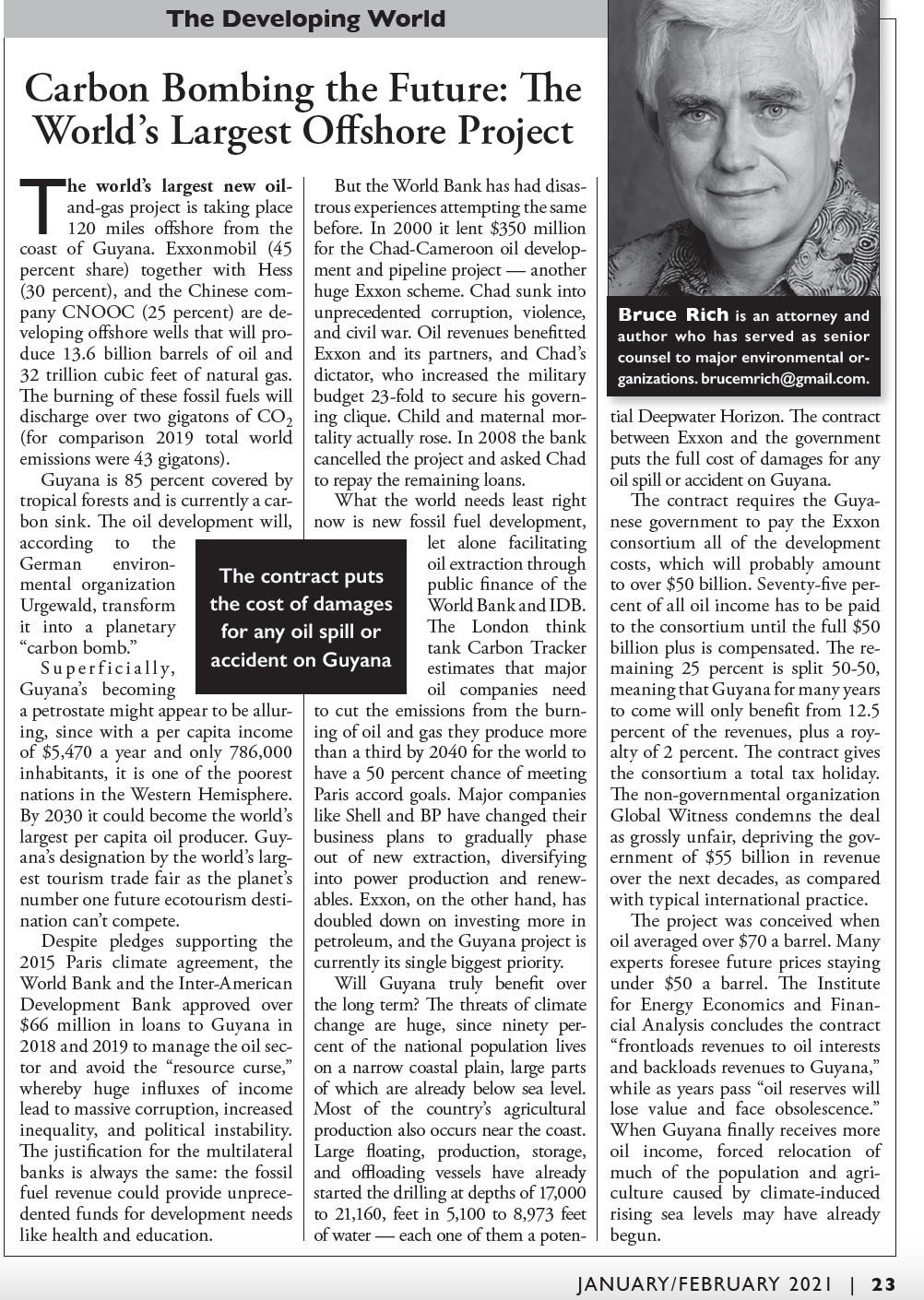- Bruce Rich
- Environmental Forum
- Janauary-February 2021
- 23
The world’s largest new oil and gas project is taking place 120 miles offshore from Guyana. Exxonmobil (45 percent share) together with Hess (30 percent), and the Chinese company CNOOC (25 percent) are developing offshore wells that will produce 13.6 billion barrels of oil and 32 trillion cubic feet of natural gas. The burning of these fossil fuels will discharge over two gigatons of CO2 (for comparison 2019 total world emissions were 43 gigatons).The burning of these fossil fuels will discharge over two gigatons of CO2 (for comparison 2019 total world emissions were 43 gigatons). Guyana is 85 percent covered by tropical forests and is currently a carbon sink. The oil development will, according to the German environmental organization Urgewald, transform it into a planetary “carbon bomb.”Despite pledges supporting the 2015 Paris Climate Agreement, the World Bank and the Inter-American Development Bank approved over $66 million in loans to Guyana in 2018 and 2019 to manage the oil sector and avoid the “resource curse,” whereby huge influxes of oil income lead to massive corruption, increased inequality and political instability. The justification for the multilateral banks is always the same: the fossil fuel revenue could provide unprecedented funds for development needs like health and education. The contract between Exxon and the government puts the full cost of damages for any oil spill or accident on Guyana. What the world needs least right now is new fossil fuel development, let alone facilitating oil extraction through public finance of the World Bank and IDB. The London think tank Carbon Tracker estimates that major oil companies need to cut the emissions from the burning of oil and gas they produce more than a third by 2040 for the world to have a 50 percent chance of meeting Paris accord goals. The contract between Exxon and the government puts the full cost of damages for any oil spill or accident on Guyana. The contract requires the Guyanese government to pay the Exxon consortium all of the development costs, which will probably amount to over $50 billion.



